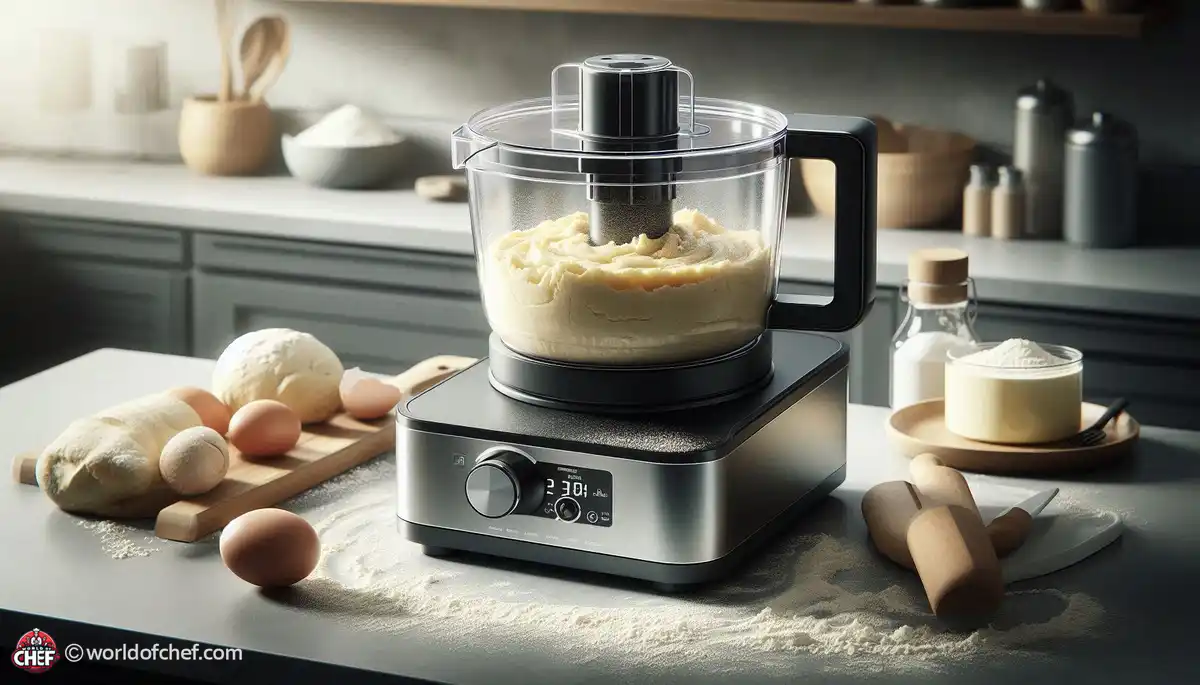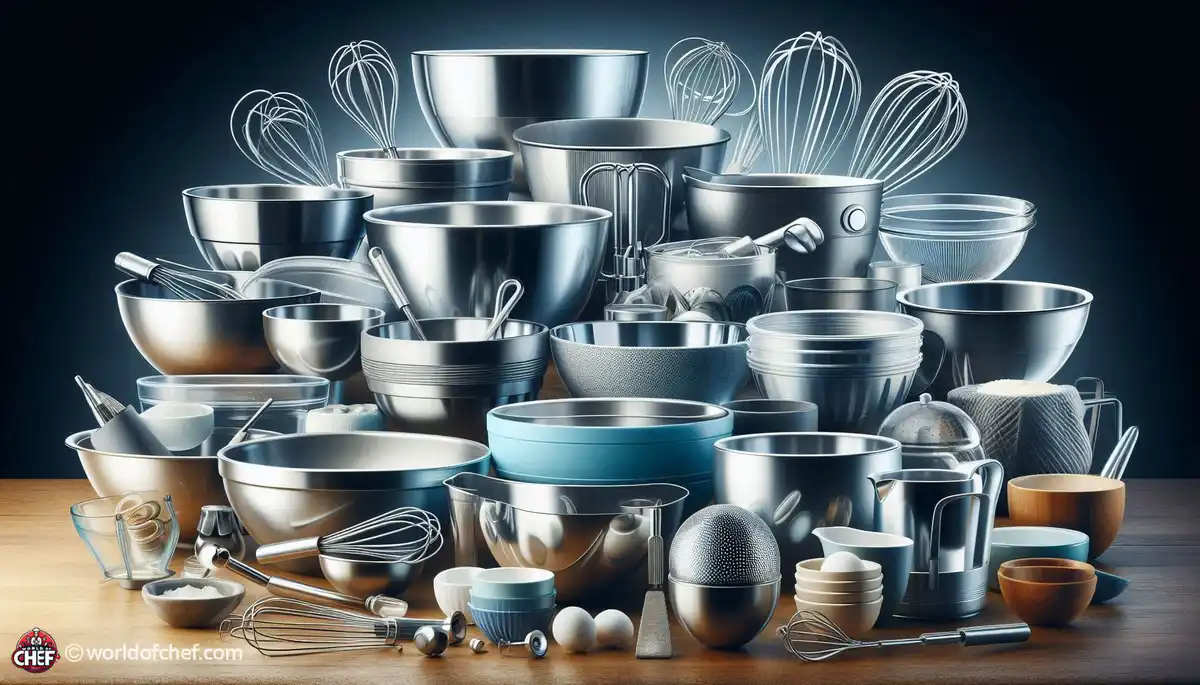
How to Choose the Right Peeler for Your Kitchen
Samantha Thames - Mar 27, 2025 - 12 min read


Over the past few decades, ceramic knives have been becoming increasingly popular for being sturdy and sharp. Do these claims merit taking space in your collection of kitchen knives? To invest both time and money in the use of ceramic knives while preparing meals, the characteristics that differentiate them as well as their benefits to be bestowed on top of conventional metallic knives must first be determined. Let's delve further into every little bit and the facts that help you decide.
Ceramic knives are made from zirconium dioxide, which is one of the hardest materials in the world, after diamonds. Because of that, it possesses a property that would only be given to something else: hard and sharp, like ceramics. Unlike metal knives, ceramic knives are heat compressed, therefore very hard, dense, and resistant to wear. Such hardness is probably one of the reasons why more home cooks and professional chefs appreciate ceramic knives.
Unlike metal knives, ceramic knives do not contain steel, which means that they do not rust, corrode, or tarnish over time. In addition, they are also significantly lighter in weight than their metal counterparts. This is what makes ceramic knives standout in the kitchen. However, their unique composition comes with certain limitations. They chip easily if used wrongly.
Ceramic knives, though in existence for not even nearly as long as those of metal, were developed and hit the market some decades back, during the 1980s, and now have a firm hold among knife enthusiasts. Its fame was further supported due to its longer time retention to hold an edge like a steel knife and a general resilience against the friction from ordinary use. Now what initially was a commodity has appeared at many varying prices.
One of the most famous characteristics of ceramic knives is the sharpness. Ceramic blades are extremely hard, so this knife stays sharp and never becomes blunt as it does with steel knives. No wonder, this can help those who do not prefer sharpening their knife always. If the usage of a ceramic knife takes good care, it does not need sharpening to that extent for years. No frequent Sharpening
Steel knives have to be sharpened regularly, while those made of ceramic hardly have to. Because ceramic knives are harder than steel blades, the blades will easily remain sharp even with their intense usage. Such high usage can be helpful with a busy home cook not having the time and machines to sharpen knives on and off. However, they must be sharpened professionally since the equipment for handling such is different from steels.
While ceramic knives hold their edge much longer, they do have a tendency to be brittle compared to steel. Even though ceramic blades are harder, they tend to break or chip easily when dropped or used on such objects as bones or frozen foods. Steel knives tend to be a bit more forgiving and easier to sharpen back up when the blade does lose its edge. Therefore, knowing this trade-off is important in the decision to invest in a ceramic knife.
It is much easier to handle ceramics in the kitchen, the lightness of the weight on hand, a reason that really explains why many home cooks tend to prefer using the ceramic knives. Comparatively, steel knives have significantly more weight than the light, almost featherlike ceramics in it that can make it difficult or very painful to work around in a long period when meal preparation is going. Anyone who spends long stretches of time chopping, slicing, and dicing vegetables and fruits will welcome reduced weight in comfort.
Lightweight, these knives give one an opportunity to slice through fragile ingredients very neatly. It is easier to slice tomatoes or herbs or fillet fish using ceramic knives as they are sharp and fine-edged. Many cooks and chefs have made these ceramic knives a first option for the precision tasks as it reduces fatigue.
For the regular home cook, frequent use with a heavy steel knife becomes tedious for the hands. Less heavy ceramic knives have fewer impacts in this respect, so more commonly are used both for home cooking as well as for professional cooks. If you are among the ones who cook regularly, then ergonomic properties of ceramic knives will definitely ensure you are not annoyed at times of extended hours for cooking.
Ceramic knives are also stain and odor resistant by nature. This is a benefit over metal knives, which may retain the smell or taste of pungent ingredients like garlic and onions. Ceramic knives do not absorb these odors, making it a game-changer when switching between ingredients and helps maintain the integrity of your food's flavor.
Ceramic knives do not react with food acidic such as tomatoes, citrus, or onions in that it will not affect their flavor and appearance. When one uses steel knives with ingredients, sometimes there's an impact due to their chemical reaction. For example, some metallic flavor appears while preparing acidic food stuff or the slight discoloration on it. All this does not happen in a ceramic blade, so perfect for slicing Fresh Fruits and vegetables.
Ceramic knives are very easy to clean because they have a smooth, non-porous surface. A quick run under water and wipe down is often all that's needed to keep them. Unlike some metal knives that need a good scrub to remove stains, ceramic knives don't need much maintenance in order to stay clean, which may be an appeal for the home cook looking for simplicity in the kitchen.
Ceramic knives are very hard and sharp, but they also happen to be more brittle than steel knives. Probably the major disadvantage of the ceramic blade is that they tend to chip or break if mishandled. If you drop a ceramic knife or use it on bones or frozen foods, it can chip the blade, which makes it impossible to use.
To ensure that the ceramic knife lasts for longer, you need to make sure you use it accordingly. Don't use a ceramic knife on hard substances like bones or thick fruits and vegetables. Also, ensure that you cut through a wooden, bamboo, or plastic cutting board. They do not expose the edge to water as much hence minimizing the chipping, and when you are putting it away, you will need a sheath or knife block to protect it from contact with other blunt objects when not in use.
Ceramic knives, as opposed to the steel blades, cannot easily be refaced and reforged in case it got damaged. If the blade of ceramics gets chipped or crack, then some professional services may repair them; but this may end up a costly and time-consuming effort. Thus they are quite suitable for delicate works rather than heavy use in kitchen.
When it comes to cutting fruits and vegetables, ceramic knives are at their best. Sharp and non-reactive, they slice through fragile produce without bruising or crushing the flesh. A soft tomato needs slicing just as much as a cucumber for a salad, but with a ceramic knife, it cuts cleanly and with precision without too much hassle.
These are ideal for cutting thinly clean-cut pieces of meat like fish or poultry, if boned. Sharpness makes them useful in preparation for making sushi or carpaccio or slicing cheese thinly. They will give finesse in the kitchen with consistent and uniform cuts that look professional and quite refined.
Remember, however, that ceramic knives are not designed for each and every work in a kitchen. It is not recommended to apply such crushing action to a hard or frozen item, because the blade could break because of the impact of application. A heavy-duty operation such as cutting across a bone or attempting to cut thick-skinned squash might chop it up and cause the knife to be completely broken. This makes it sure that the lifespan of the ceramic knife will extend further.
Proper storage of your ceramic knife is important in order to extend its life. Do not store it loosely in a drawer, as it may collide with other utensils and cause chips. Instead, store it in a knife block, magnetic strip, or blade sheath to protect the blade. This will avoid accidents and keep your knife sharp and functional for a longer period.
While ceramic knives do not require much maintenance, they need to be properly cleaned. Hand washing is always the best approach since a dishwashing machine tends to jostle the blade and hence damage it. Use mild soap and water, then dry the knife immediately for optimal maintenance. Do not use abrasive cleaning tools as they may eventually scratch or dull the blade.
Sharpening is not commonly performed on ceramic knives, and when it becomes necessary, should be performed with a diamond sharpening tool or at a professional service, because ceramic blades cannot be sharpened with kitchen sharpeners. Costlier or more time consuming than that, the sharpened edge of a ceramic knife, overall, wears much longer than that of its steel peer, so not sharpening as frequently is the conclusion
This advantage comes with steel knives over durability since they do not tend to break easily and repairing is less complicated. Ceramics retain their edge so much longer and sharpen fewer times than steel. A lot may depend on how important you consider having it very long-lasting with respect to its sharpness over how much you care about a longer period of overall use.
The ceramic knife is razor-sharp, both out of the box and for many years with proper care. In this regard, it works best for delicate cutting needs, especially with fruits and vegetables. The steel knives are sharp, too; however, they dull very easily but are very versatile and can be used heavily for heavy-duty chopping requirements.
You're probably going to have to pay more for an upfront cost with ceramic knives, especially the better types, but the long lifespan of the edge retention could make them a better deal for some. On the other hand, steel knives tend to be more economical and easier to care for overall, but offer an enormously wider range of pricing. Whether or not value is good or excellent is dependent on your needs and habits in the kitchen, but if you want specialized performance, then the ceramics might be worth the spend.
You should first consider what tasks you most frequently undertake in the kitchen before purchasing ceramic knives. If most of your cooking is prep of fruits, vegetables, and boneless meats, you will be quite satisfied with your ceramic knives. If, however, you usually chop bones, hard fruits or vegetables, or thaw frozen foods, a steel knife will likely better meet your needs.
Sharp, lightweight to handle, low maintenance are the benefits of ceramic knives. Yet, they break easily, and sharpening is very hard. It will then be weighed in the pros and cons what investment worth it for the kind of cooking you will do. For some, precision and sharpness would be good enough to compromise with the fragility, while others would want steel to be tougher.
A very good addition to the kitchen, especially for people who value precision, sharpness, and ease of use, are ceramic knives. However, they're definitely not a one-size-fits-all solution. If you're willing to invest in proper care and use them for the right tasks, these ceramic knives can prove a worthwhile investment that adds a new dimension to your cooking experience.

Samantha Thames - Mar 27, 2025 - 12 min read

Louis Saul - Jan 15, 2025 - 11 min read

Emery Donley - Oct 26, 2024 - 14 min read

Dennis Hague - Oct 26, 2024 - 14 min read